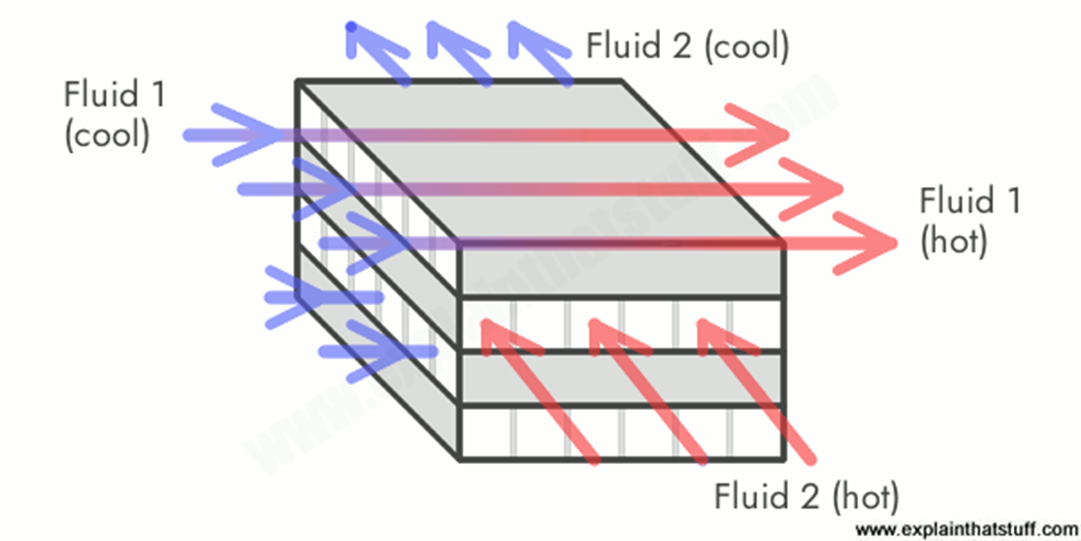
Products Used in Geothermal Heat Pumps and Solar Thermal Systems
As we continue to innovate and adopt cleaner energy technology, renewable energy technologies are increasingly vital in our quest for sustainable and efficient energy solutions. Among these technologies, coil heat exchangers play a crucial role in enhancing the performance and efficiency of systems like geothermal heat pumps (GHPs) and solar thermal systems.
How They Work
Before diving into their applications in renewable energy, it's essential to grasp the basics of what these materials do. These devices facilitate the transfer of thermal energy between fluids, often water or refrigerants, without direct contact. They consist of coiled tubes or pipes, maximizing surface area contact between the fluid being heated or cooled and the medium carrying out the heat exchange process.
Geothermal Heat Pumps (GHPs)
Geothermal heat pumps harness the stable temperature of the Earth below the surface to heat and cool buildings efficiently. Exchangers are integral to GHP systems, facilitating the exchange of heat between the ground and a fluid circulating within the system.
Ground Loop Heat Exchangers
In GHPs, exchangers are commonly used in ground loop systems. These systems circulate a heat transfer fluid (often water mixed with antifreeze) through a series of underground pipes or coils buried in the Earth. The ground loop heat exchanger absorbs heat from the relatively warmer ground during winter to heat the building and rejects heat back to the ground during summer for cooling.
Types of Ground Loops
Horizontal Coils: Buried horizontally in trenches.
Vertical Coils: Installed vertically in boreholes drilled into the ground.
Pond/Lake Coils: Submerged in water bodies.
Benefits
Efficiency: Enhances the efficiency of heat transfer due to increased surface area contact.
Durability: Resistant to corrosion and designed for long-term underground operation.
Sustainability: Utilizes renewable energy from the Earth's stable temperature.
Solar Thermal Systems
Solar thermal systems convert sunlight into thermal energy for heating water or air. Heat exchange devices are vital components in these systems, facilitating the transfer of solar energy captured by solar collectors to the fluid used for heating purposes.
Solar Collector Systems
Flat Plate Collectors: Include a flat, insulated box with a transparent cover and an absorber plate coated with a selective surface to absorb solar radiation.
Evacuated Tube Collectors: Consist of parallel rows of transparent glass tubes with an absorber coating inside each tube.
The Role of Coil Exchangers
Heat Transfer Medium: The fluid circulating through the exchanger absorbs thermal energy from the solar collectors.
Heat Storage: Often integrated with thermal storage tanks to store heated water for later use, ensuring continuous supply even when sunlight is unavailable.
Advantages of These Products in Solar Thermal Systems
Efficiency: Optimizes the transfer of solar energy to the heat transfer fluid.
Versatility: Compatible with various solar collector designs and configurations.
Reliability: Provides consistent performance in capturing and utilizing solar thermal energy.
Conclusion
Coil exchangers are indispensable components in renewable energy systems like geothermal heat pumps and solar thermal systems. Their ability to efficiently transfer thermal energy between fluids contributes significantly to the sustainability and effectiveness of these technologies. Whether harnessing the Earth's stable temperature for heating and cooling with GHPs or capturing solar energy for hot water and space heating with solar thermal systems, exchangers play a pivotal role in advancing renewable energy solutions.

